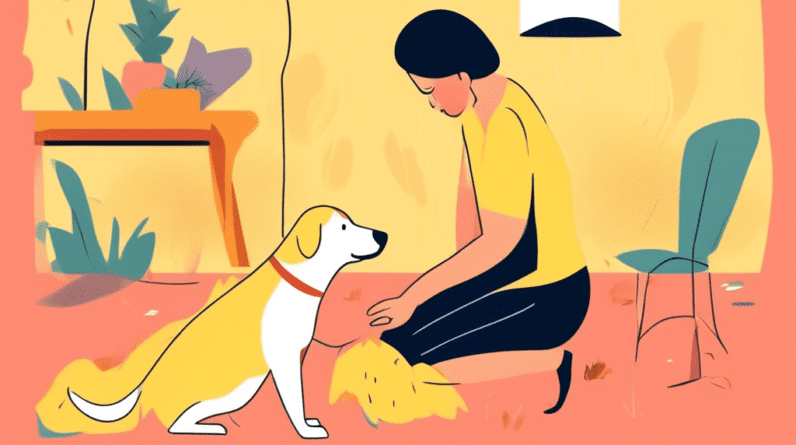
Should a Labrador Retriever Wear a Coat in Winter? Protecting Your Pup in the Cold
Understanding Your Labrador’s Natural Coat
Labrador Retrievers, known for their playful spirit and unwavering loyalty, are also equipped with a double coat designed to withstand chilly temperatures. This double coat is a key factor when considering whether your Labrador needs a coat in winter. Let’s break it down:
- The Top Coat: This layer consists of dense, straight hairs that repel water and provide insulation against the cold. Think of it as a waterproof, wind-resistant jacket.
- The Undercoat: Soft and fluffy, this layer provides excellent insulation, trapping heat close to your dog’s body. Imagine a cozy down jacket.
Factors Influencing Coat Necessity
While their double coat offers considerable protection, several factors can influence whether your Labrador needs an extra layer in winter:
1. Temperature and Climate
This one seems obvious, but it’s crucial. In regions with mild winters, your Labrador’s natural coat may suffice. However, when temperatures plummet below freezing, particularly with added windchill, a coat provides an additional layer of warmth, especially during extended outdoor activities.
2. Age and Health
Senior Labradors, puppies, and those with health conditions like arthritis or hypothyroidism are more susceptible to the cold. Their bodies may struggle to regulate temperature effectively, making a coat beneficial, even in moderately cold weather.
3. Coat Thickness and Condition
Just like humans, Labradors can vary in their cold tolerance. Some have luxuriously thick coats, while others may have thinner fur. Observe your dog. If they seem particularly chilly or shiver in cold weather, a coat is a good idea. Regular brushing also plays a role, as a matted coat loses its insulating properties.
4. Duration of Outdoor Exposure
A quick potty break in the backyard versus an hour-long hike in the snow require different considerations. Short trips may not necessitate a coat, especially if your Labrador is active and moving. However, extended exposure to cold, particularly if your dog is less active, warrants extra warmth.
Choosing the Right Coat for Your Labrador
If you’ve decided a coat is in order, selecting the right one is key to ensuring your Labrador stays comfortable and protected:
1. Fit and Comfort
A well-fitting coat should allow for freedom of movement without restricting your Labrador’s gait. Ensure it fits snugly but not too tight, allowing for a comfortable range of motion.
2. Water Resistance
Labradors love water, even in winter. Opt for a water-resistant or waterproof coat to keep your dog dry during snowy or rainy conditions. This prevents their fur from becoming wet and losing its insulating properties.
3. Material and Insulation
Consider the climate and your dog’s activity level. For milder conditions, a fleece lining might suffice. In colder regions or for less active dogs, a coat with added insulation will provide extra warmth.
4. Visibility
Winter days often mean reduced visibility. Choose a coat with reflective elements or bright colors to enhance your dog’s visibility during evening walks or in low-light conditions.
Signs Your Labrador is Cold
Even with their double coat, Labradors can still get cold. Be attuned to these signs:
- Shivering: One of the most obvious signs of coldness.
- Whining or Whimpering: May indicate discomfort or coldness.
- Lifting Paws or Reluctance to Walk: Cold paws can be uncomfortable.
- Curling Up and Tucking Tail: Attempting to conserve body heat.
Beyond the Coat: Additional Winter Care Tips
Beyond providing a coat, here are some additional tips to keep your Labrador happy and healthy throughout winter:
- Paw Protection: Use paw balm or booties to protect their paw pads from ice, salt, and cold surfaces.
- Limit Bath Time: Frequent bathing strips away natural oils, reducing coat insulation. If baths are necessary, opt for lukewarm water and ensure thorough drying.
- Provide Shelter: Ensure your Labrador has access to a warm, dry shelter outdoors and a cozy spot indoors, away from drafts.
- Adjust Exercise: Cold weather can make breathing more difficult, especially for brachycephalic breeds. Monitor your dog’s energy levels and adjust exercise routines accordingly.
Conclusion: Prioritizing Your Labrador’s Comfort
Ultimately, the decision of whether your Labrador needs a coat in winter comes down to individual factors. Their age, health, coat thickness, and the severity of the weather all play a role. By understanding these factors, observing your dog’s behavior, and providing appropriate protection, you can ensure your furry friend stays warm, comfortable, and safe throughout the colder months. Remember, a happy dog is a warm dog, and providing the right care makes all the difference.






